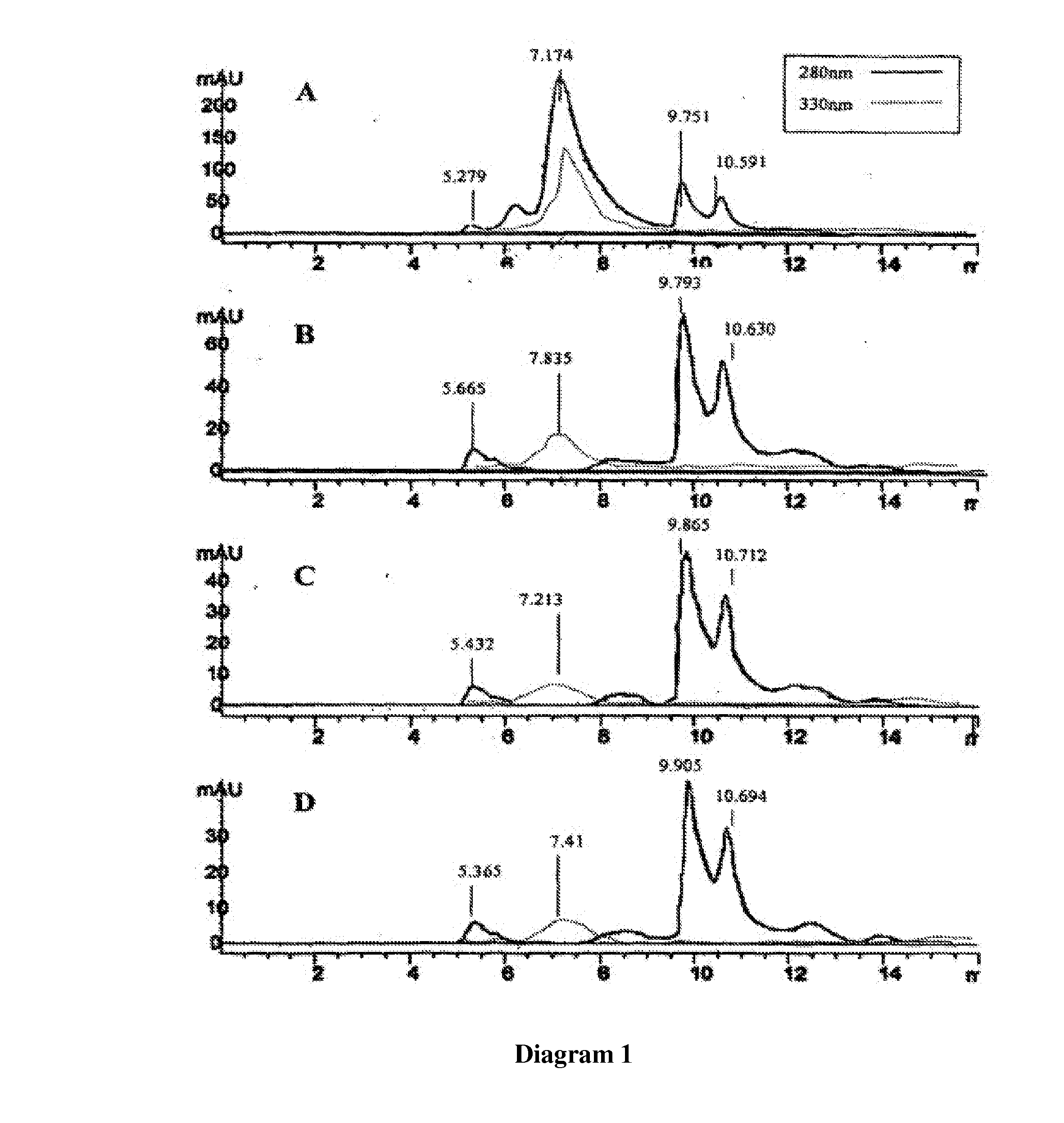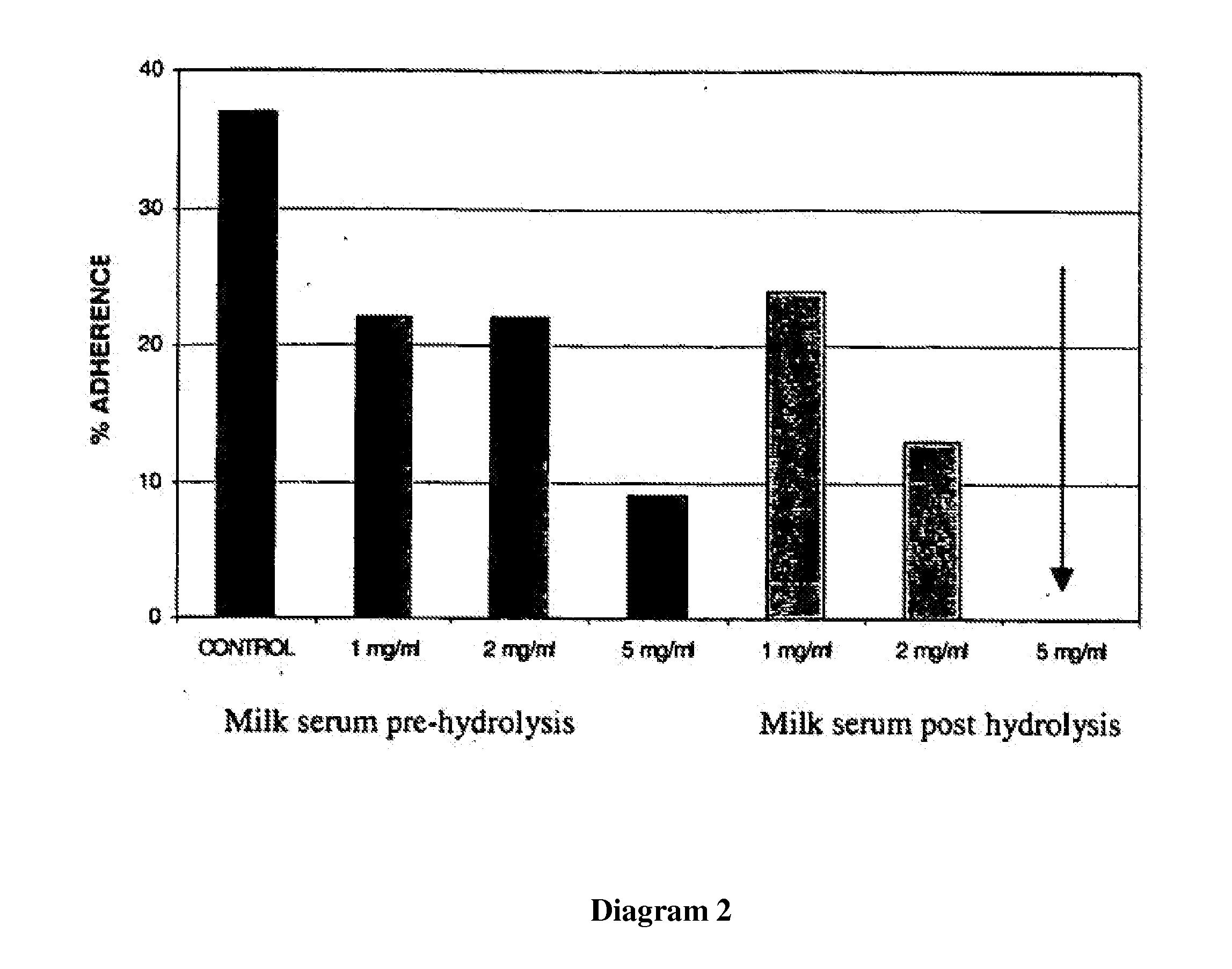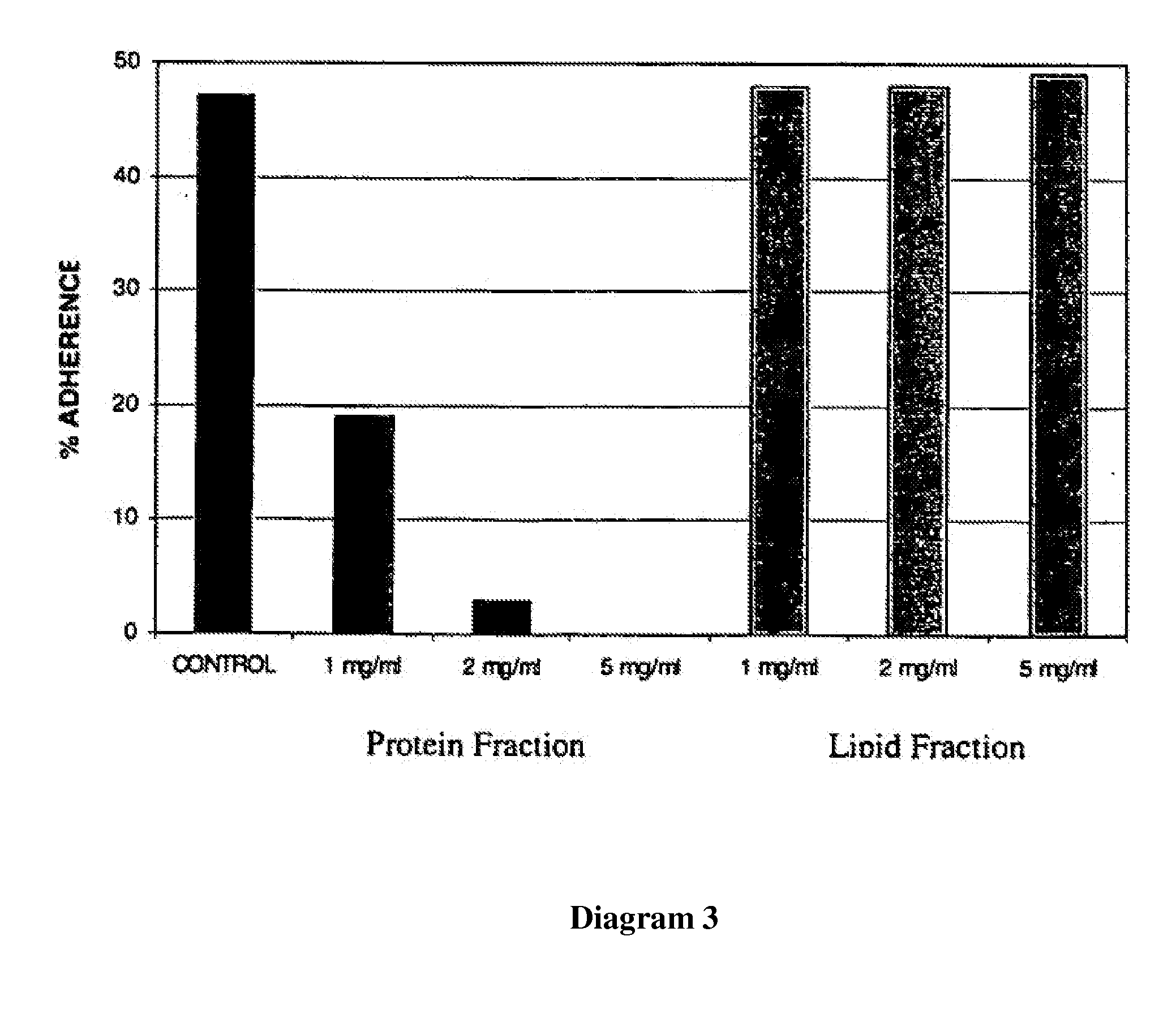Product comprising a combination of milk serum apoproteins and free fatty acids
a technology of free fatty acids and serum apoproteins, which is applied in the field of products comprising a combination of milk serum apoproteins and free fatty acids, can solve the problems of preventing pathogenic organisms such as fungi, bacteria or virion from achieving sufficient proximity to the host cell surface to establish adhesion
- Summary
- Abstract
- Description
- Claims
- Application Information
AI Technical Summary
Benefits of technology
Problems solved by technology
Method used
Image
Examples
example 2
[0116]Using the growth assay described in Methods and Materials above, the growth inhibitory properties of the Standard Formulation against a fresh clinical isolate of Candida albicans was evaluated. The assay was a microtitre plate format and each test concentration was conducted in quadruplicate. Growth was measured at 600 nm over a 20-hour period and the results are illustrated in Diagram 6. The Standard Formulation (at 5 mg / ml) gave almost 90% inhibition of growth, relative to the control with 0 mg / ml of the Standard Formulation added. The Standard Formulation at 1 mg / ml gave an intermediate result.
[0117]Using a similar assay procedure, with the exception of adding the test substances after 5 hours of normal growth, is described herein as an intervention assay. The Standard Formulation is added at concentrations ranging from 0 mg / ml to 8 mg / ml.
[0118]The test concentrations are set-up such that there is similar dilution effect in all wells when pre-warmed (to 37° C.) test solutio...
example 3
[0119]The Standard Formulation inhibits adhesion as well as growth. The adhesion assay method has been described in Methods and Materials above. Using the same formulation as in Example 2, the inhibitory effects on the adhesion of the same fresh clinical isolate to BEC's are illustrated in Diagrams 8 and 9.
[0120]In Diagram 8, the yeast cells have been exposed to the Standard Formulation for 10 minutes prior to being added to the BEC's. In Diagram 9, BEC's have been exposed to the Standard Formulation for 10 minutes prior to being added to the yeast suspension.
[0121]The ‘Control’ in both of these assays represents the adhesion achieved under the test conditions when no inhibitory substances are present; 41% and 35%, respectively. The addition of the Standard Formulation at 1 mg / ml in Candida pre-treatment reduces adhesion to 20% (53% inhibition), while the same concentration in BEC pre-treatment reduces adhesion to 16% (55% inhibition). At 2 and 5 mg / ml of the Standard Formulation in...
example 4
[0123]The effectiveness of the Standard Formulation against both growth and adhesion of methicillin resistant Staphylococcus aureus (MRSA) is demonstrated in Diagrams 10 and 11.
[0124]MRSA is routinely sub-cultured on blood agar and a single colony is used to inoculate a tube of Oxoid Brain Heart Infusion Broth as described in Methods and Materials above. After 8 hours, the innoculum is used in growth and adhesion assays using the methodologies described above.
[0125]MRSA is not as sensitive to free fatty acids / monoglycerides as other organisms and the addition of citrate salts, as are contained in the Standard Formulation, are essential for meaningful inhibition of growth of this particular organism. Diagram 10 illustrates the effect of the Standard Formulation at 5 mg / ml and with increasing concentrations of trisodium citrate (0, 2, 4 and 5 mg / ml), complete inhibition of growth is achieved when trisodium citrate at 4 or 5 mg / ml is added to the Standard Formulation of 5 mg / ml. Trisod...
PUM
| Property | Measurement | Unit |
|---|---|---|
| Fraction | aaaaa | aaaaa |
| Fraction | aaaaa | aaaaa |
| Fraction | aaaaa | aaaaa |
Abstract
Description
Claims
Application Information
 Login to View More
Login to View More - R&D
- Intellectual Property
- Life Sciences
- Materials
- Tech Scout
- Unparalleled Data Quality
- Higher Quality Content
- 60% Fewer Hallucinations
Browse by: Latest US Patents, China's latest patents, Technical Efficacy Thesaurus, Application Domain, Technology Topic, Popular Technical Reports.
© 2025 PatSnap. All rights reserved.Legal|Privacy policy|Modern Slavery Act Transparency Statement|Sitemap|About US| Contact US: help@patsnap.com



